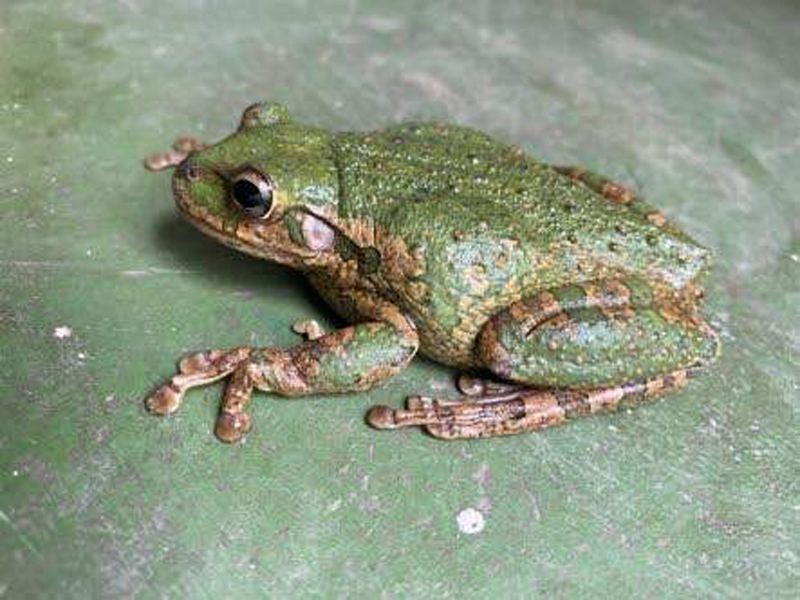(Jamaica Observer) A local scientist is appealing to Jamaicans to report sightings of an invasive species of frogs after receiving photos of the amphibians in two areas on the island’s south coast, noting that the creatures can harm our ecosystem.
Terrestrial Biologist Damion Whyte, who is known for his environmental science work, says he and his colleagues have received reports of the invasive Cuban tree frog (Osteopilus septentrionalis) in St Catherine and Clarendon.
“The first official sighting was made by a colleague scientist three years ago. He spotted a green frog on a fish farm in Clarendon,” Whyte told the Jamaica Observer.
“Specimens have also been identified in Denbigh, and we have continued to track the spread of these frogs throughout the two parishes. With the help of social media, persons have also shared pictures of their encounters,” he added.
According to Whyte, one Instagram user who posts under the handle Julian aka @skillarchii showed a picture of Cuban tree frogs she found on her window ledge in Four Paths, Clarendon. Whyte also said he saw a Twitter post with pictures of frogs that had been first encountered in 2018 in Palmer’s Cross, Clarendon.
“We also continue to get reports from fish farms,” Whyte said.
“What we need is to know all the areas where they are so that we can put in place a management plan,” Whyte explained, adding that the aim is to prevent the amphibians from damaging Jamaica’s ecosystem.
Cuban tree frogs prey on beetles, roaches, small lizards, snakes, and other frogs. Their tadpoles can also out-compete endemic or local frog species, thus contributing to their decline.
In Jamaica, there are over 29 species of frogs that are both native and endemic to the island. A number of these frogs are currently threatened primarily as a result of habitat loss.
“The introduction of an invasive species, such as the Cuban tree frog, could therefore negatively impact on our species if it can spread through the country,” Whyte stated.
He also pointed out that the Cuban tree frog can have an impact on humans as the mucous it secretes from its skin as a defensive mechanism can irritate people’s skin, eyes, and nose. There have also been reports of these secretions triggering asthma attacks.
The frogs can also be a public nuisance, messing up walls and blocking drains. In Florida, for instance, they have been known to cause costly power outages by short-circuiting utility switches.
While it is native to Cuba, the Cayman Islands, and The Bahamas, the Cuban tree frog can also be found in Hawaii.
The frog ranges in size between 1.5 and 3 inches. The females are generally twice the size of the males. Their body colour varies from white, grey, brown, and green, with some dark blotches on the skin. As with most tree frogs, they have enlarged sticky toe pads for climbing.
They generally reproduce between March and October, and it has been reported by Dr Steve Johnson from the University of Florida that a female can lay up to 1,000 eggs, which are then fertilised externally by the male.
The Cuban tree frogs can be easily identified by their loud hoarse calls, “MRAAAAK”, at nights; you can also occasionally hear them in the day, especially after a period of heavy rainfall, which is common with most frogs.
“People have been calling, telling us of strange sounds they have been hearing at nights,” Whyte related. “They ask if the sounds are being made by crocodiles, but when they describe the sound we recognise that they are being made by the frogs.”
He said he and his colleagues are still not sure how the Cuban tree frog arrived in Jamaica. However, in Florida, it is alleged that the amphibians got there as hitchhikers on cargo ships.
“We encourage the public to take pictures and share information of sightings which can help track their spread,” Whyte said. “In the meantime, we continue to use information from other countries where they are a major problem to guide our monitoring.”
He asked anyone who encounters the frogs to e-mail the information to dl_whyte@yahoo.com, or via Twitter to @Roosters_world, on via Instagram to @Roosters_world1.
